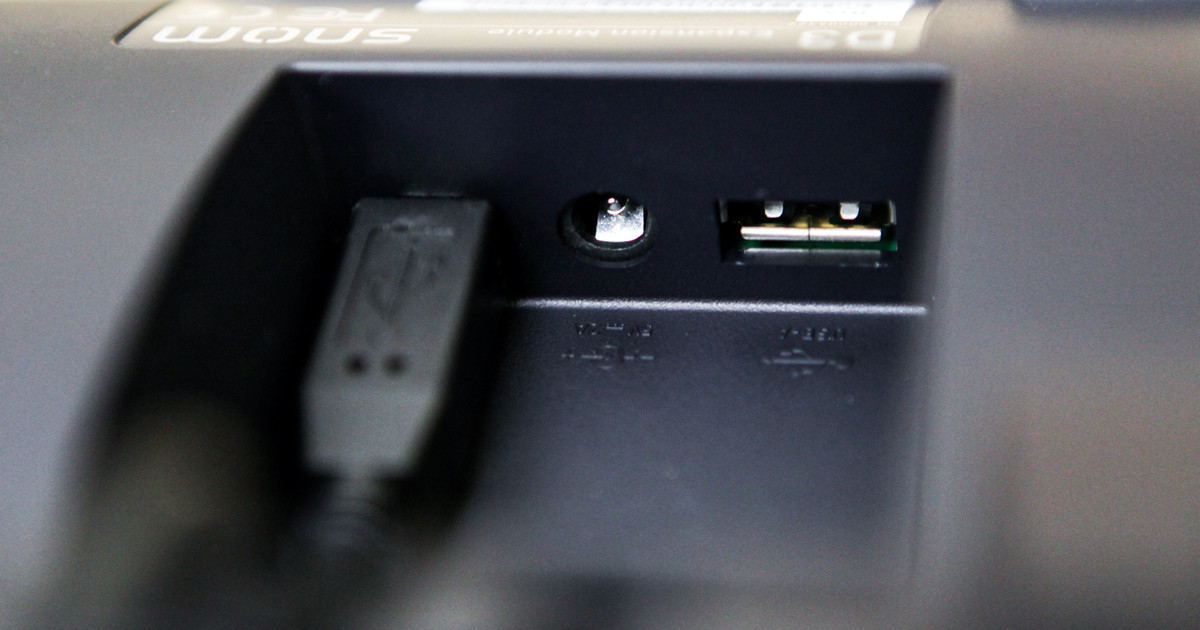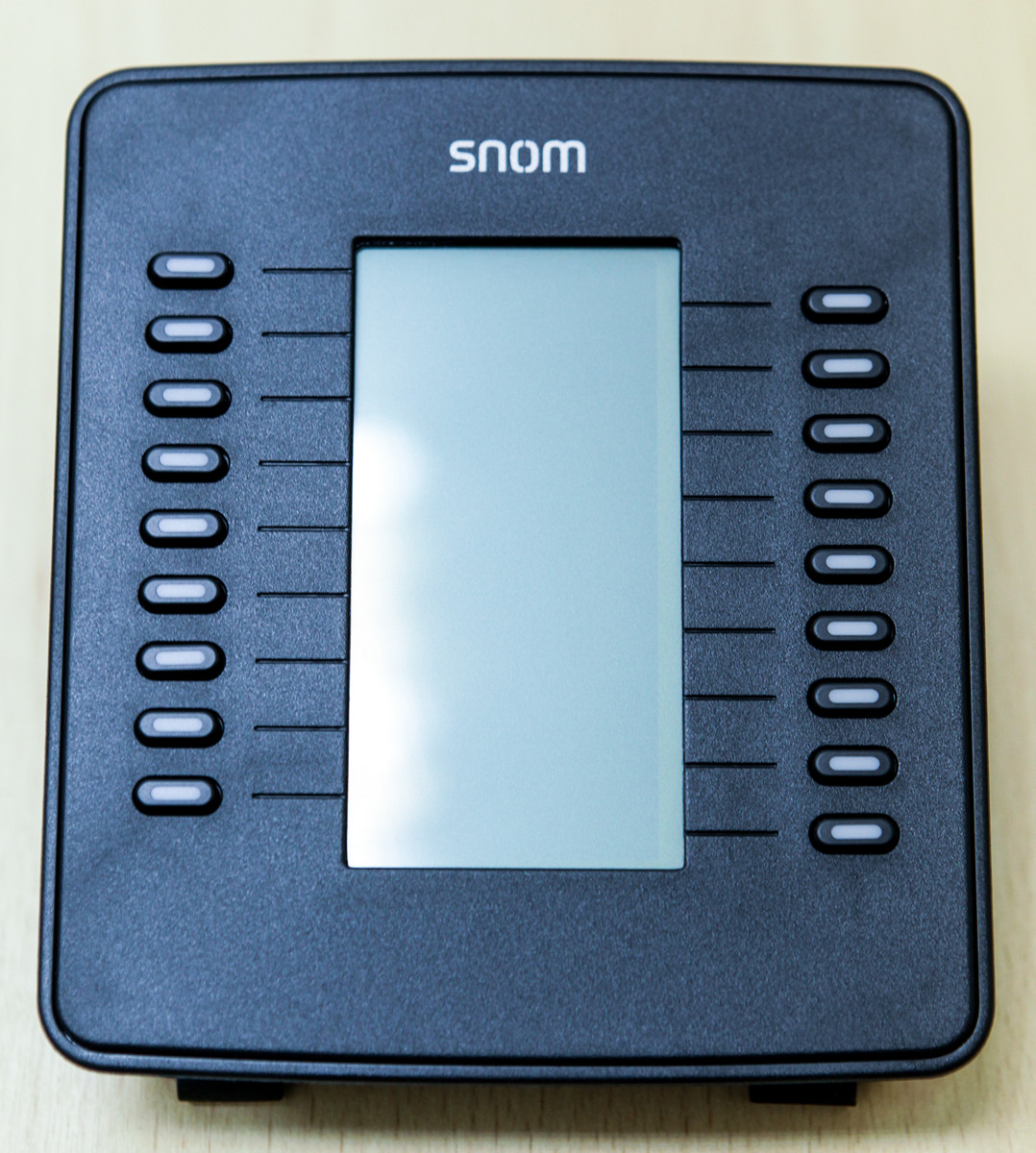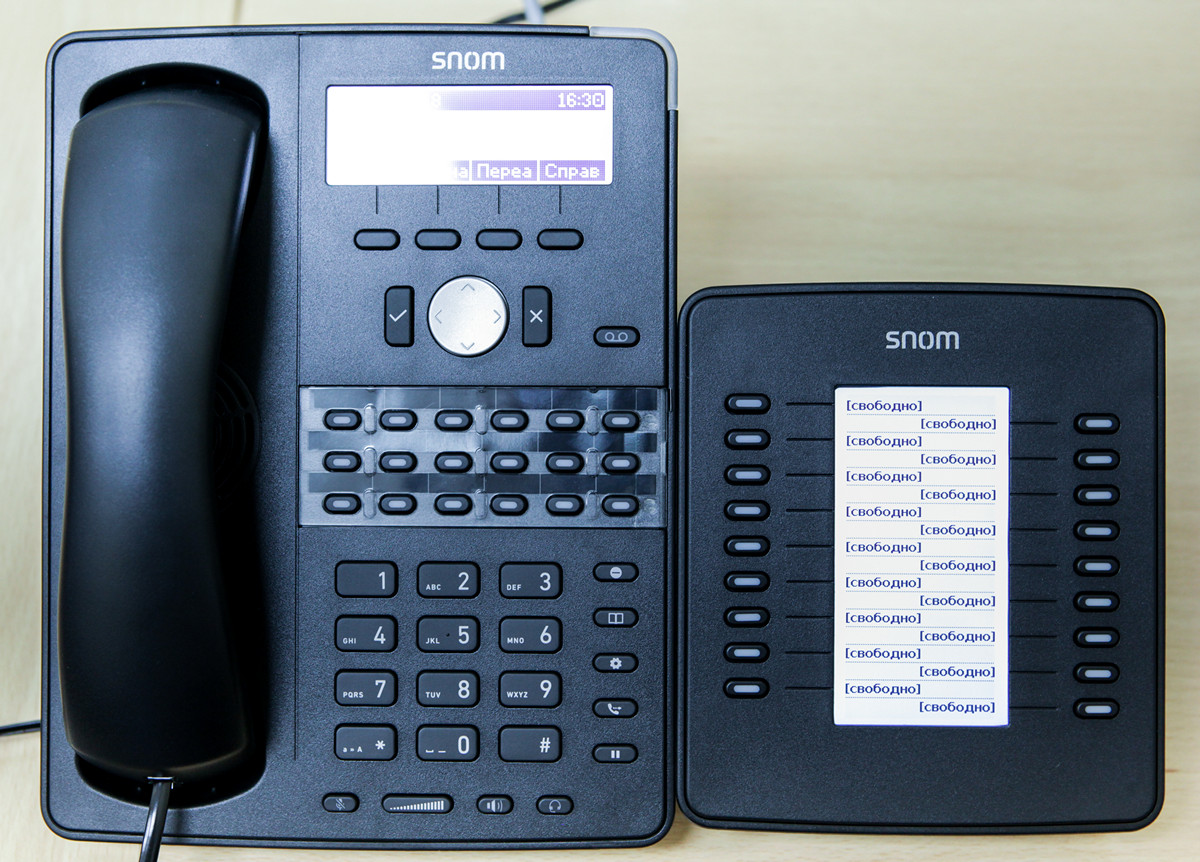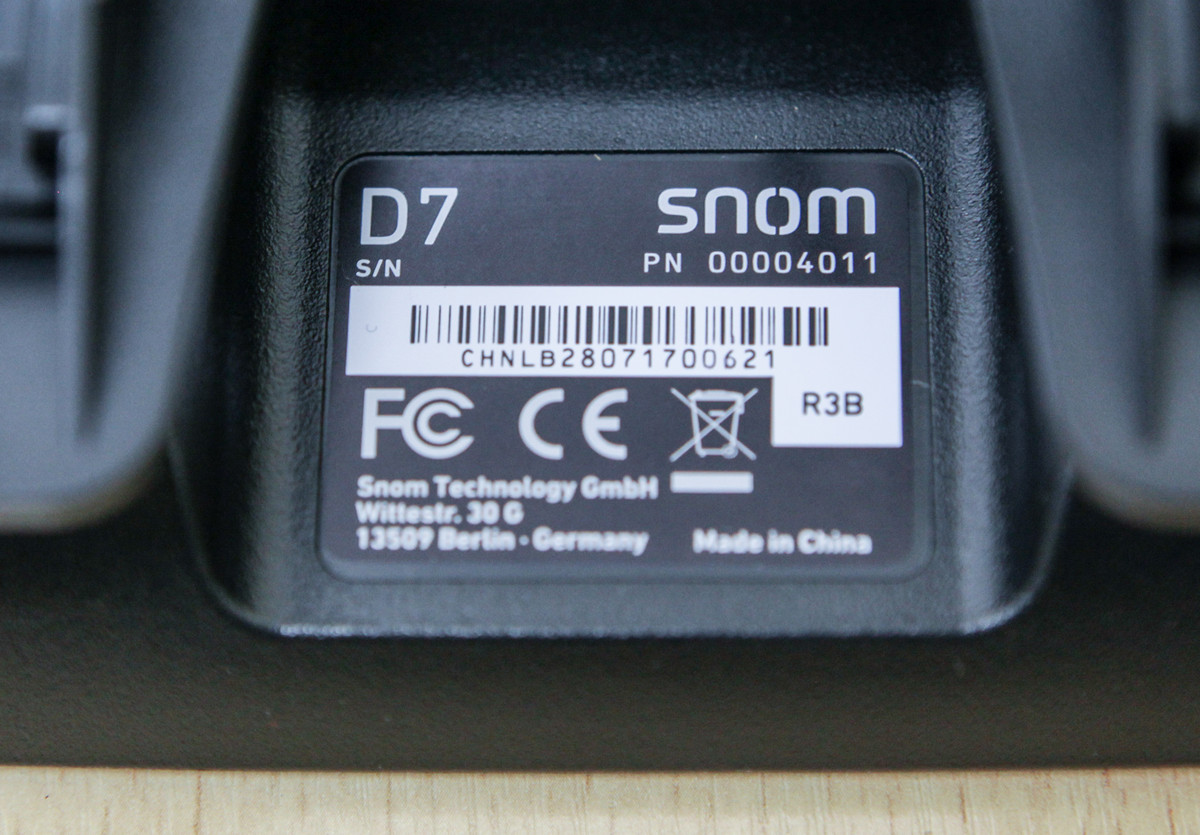Snom D3 and D7 Expansion Module Overview

In previous reviews of desktop IP phones, Snom did not mention the expansion modules with additional programmable function keys. The time has come to tell you more about these modules, which are produced separately for the D3xx and D7xx lines.
What are expansion modules for?
At the reception in large companies — and even medium-sized — secretaries often lack buttons to switch calls to all directors, department heads, and department heads, not to mention employees in lower positions. Lack of functional buttons can occur in call centers, when you need to constantly distribute incoming calls to dozens of operators. And even virtual pages do not save, when, for example, 4 values can be assigned to 8 physical keys.
For such cases, Snom and offers expansion modules. In fact, this is a separate device with a display and columns of keys on the sides, which can be programmed to your liking. For the lines of IP phones D3xx and D7xx modules are available with very original names - D3 and D7. Let's look at them in more detail.
D3
As you remember, the line of phones Snom D3xx and D7xx differ only in design. This was manifested not only in the "exterior" of expansion modules, but also in their design.
D3 is compatible with all Snom D3xx phones.
In the center of the module is a large monochrome display, which displays the current values of the function keys, placed by columns on both sides of the display. The keys, as in D3, two-color - glow either red or green.

The display is equipped with a backlight, which automatically turns on when you pick up the phone, press a key on the module or on the phone, or when someone calls.

If no one calls and you do not use the phone, the backlight goes out after a few seconds. The keys are equipped with two-color LEDs, so that an action / event can be indicated not only by blinking or constant luminescence, but also by color. Absolutely all module settings are made from the phone.
D3 is rigidly attached to the phone and makes up with it a single whole, the concavity of its panel repeats the curves of the panels of all compatible phones. Connecting through a USB 2.0 port, the module can receive power via both a USB cable and a 5-volt power supply.



Mount to the phone. There is a similar counterpart on the other side of the module itself, which allows you to connect another module to it.
The module is equipped with two USB ports, and up to three D3 can be connected to the same phone with a “train”. That is, in addition, you can get 18 x 3 = 54 function keys. There are no virtual pages; only one action can be assigned to each key.
The second USB-port of the last module in the chain can also be activated by connecting a headset or Wi-Fi-dongle. Please note that the power of USB “parent” phone is not enough to power two or three D3, in this case, the second module will have to connect the power supply.


D7
D7 is compatible with all models of the Snom D7xx range.
This module is based on the same concept: the big screen, and on the sides of the two columns of programmable function keys - also 18 pieces. As in D3, here each key can be assigned only one value, that is, there are no virtual pages.

The front panel of the module is flat, just like the phones themselves in this line.

The monochrome display is also equipped with a backlight, which turns off when the phone is inactive.


D7, unlike D3, is not physically attached to phones, so externally it does not look like a part of a phone, but as an external device (which it is in essence). Why did the D7 not be "fastened"? Most likely, the reason is that the phones of the Snom D7xx range are not unified in height with each other, unlike the D3xx.


Like all D7xx phones, the D7 module has a quick-detachable stand that gives the device a tilt angle of 46 or 28 degrees.

D7 connects to the phone via USB, and here we also have the opportunity to connect a chain of up to three modules at once. But given their freestanding design, it will not look as harmonious as in the case of D3.

The D7 has only one USB port, that is, the interface cable is “embedded” in the case. The last port in the chain of the module can also be used with benefit by connecting a headset or Wi-Fi- “whistle”.


The power options are the same as in the D3: if one module is connected, it can be powered from USB, and if two or three, then the power supply unit should be connected to the second module.
